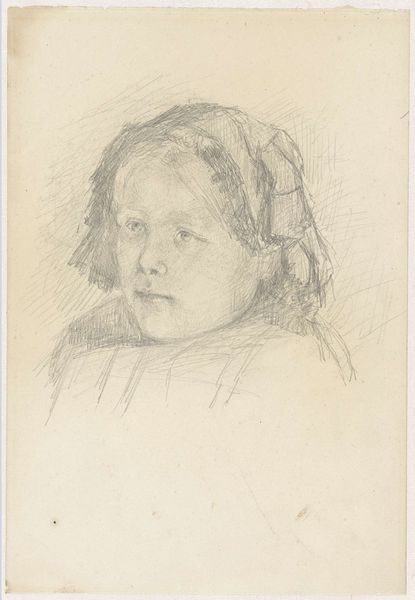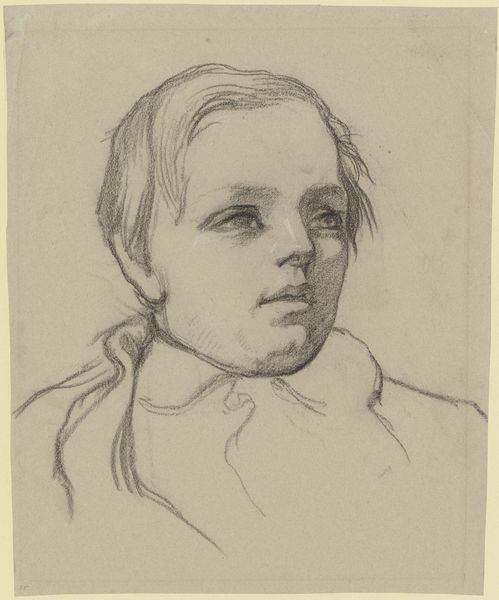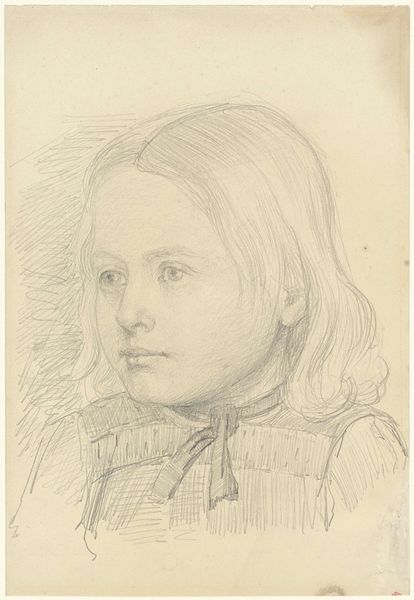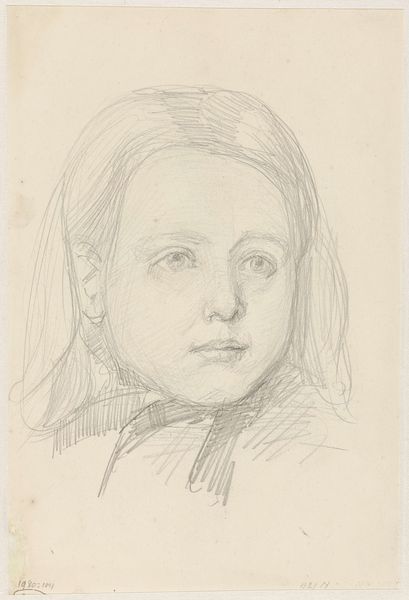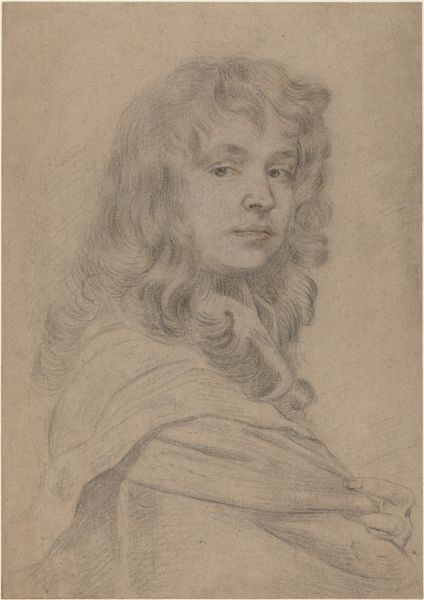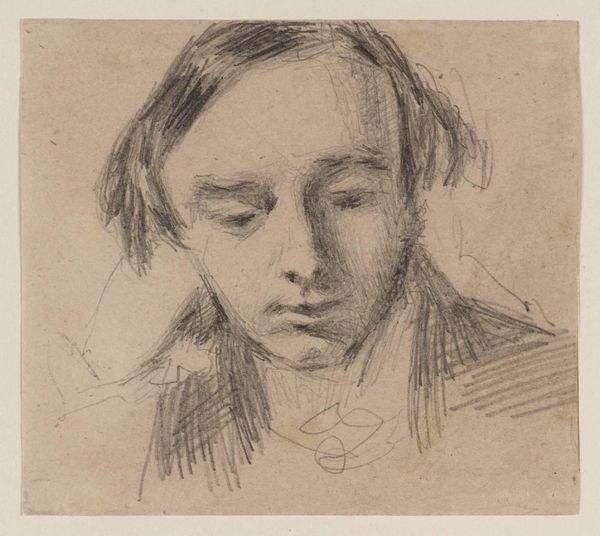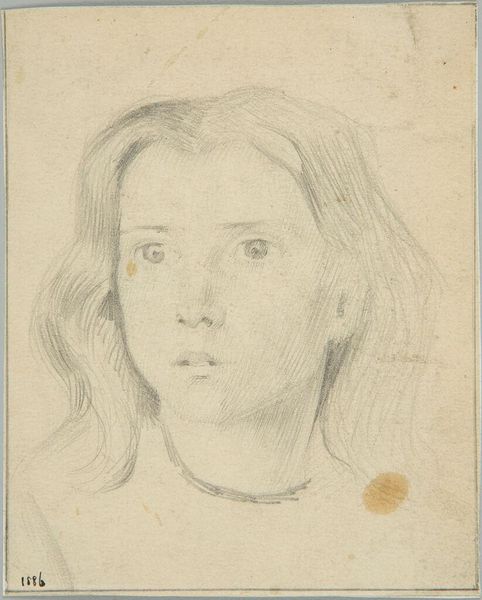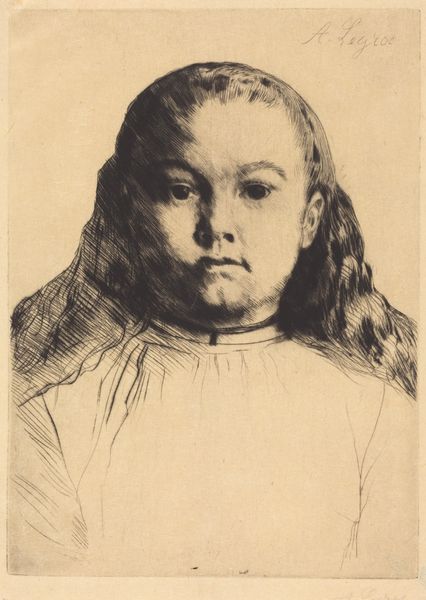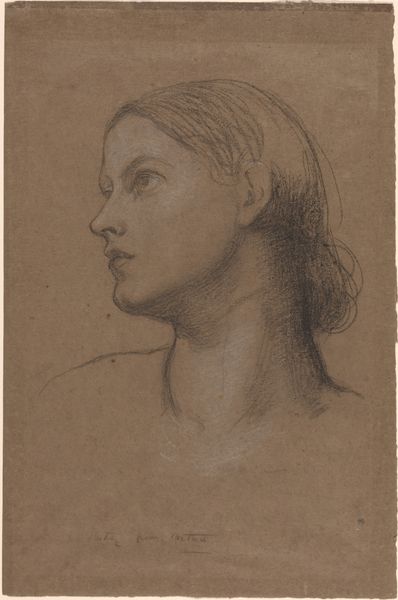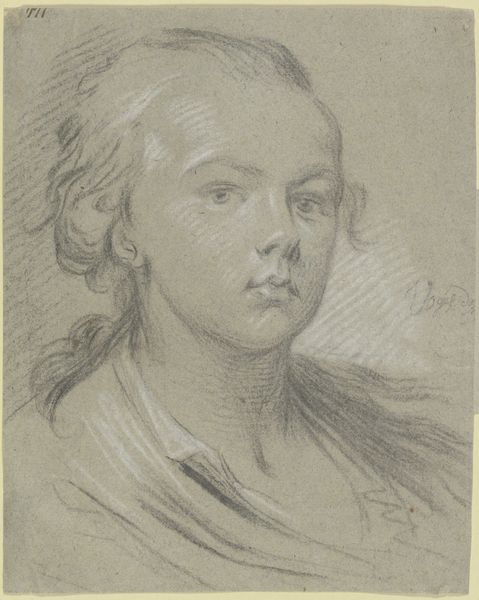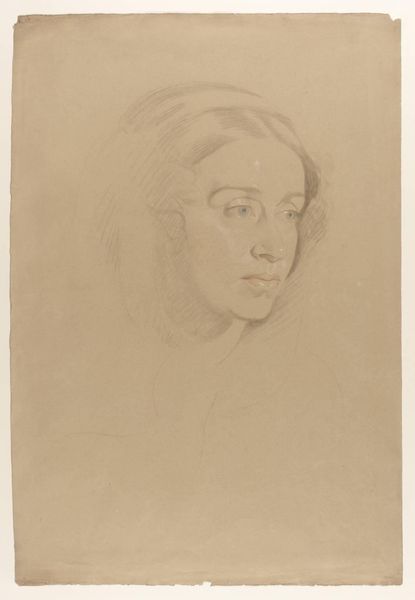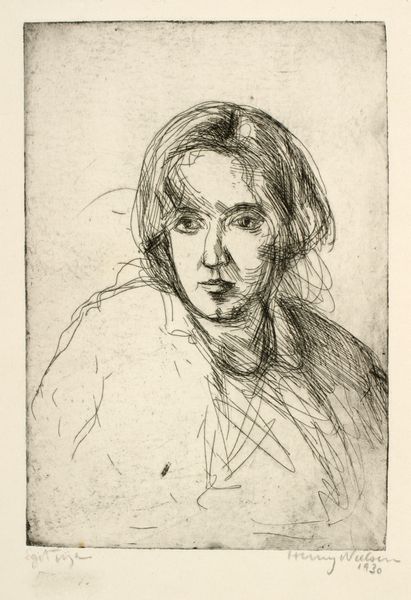
drawing, pencil
#
portrait
#
pencil drawn
#
drawing
#
self-portrait
#
charcoal drawing
#
pencil drawing
#
romanticism
#
pencil
#
portrait drawing
Copyright: Public Domain: Artvee
Editor: Here we have a pencil drawing titled "Portrait of a Child" by Eugène Delacroix. The delicate lines and shading give the portrait a soft, almost vulnerable quality. What strikes you most about it? Curator: It’s interesting to see Delacroix, primarily known for his dramatic paintings, work in such an intimate scale and medium. Drawings like these often served as preparatory studies, or personal explorations, that can shed light on the social function of childhood itself. Do you think the boy here, frozen in the paper, looks posed and proper or does this represent an affect captured by the artist at leisure? Editor: He seems posed, although his gaze is very direct. Was there anything socially or politically significant about children's portraiture at that time? Curator: Absolutely. During the Romantic era, childhood was increasingly idealized as a state of innocence, but at the same time it could function to express an anxiety over class inheritance, legacy and other burdens the depicted youth would be asked to shoulder. Portraits of children, often commissioned by wealthy families, served as emblems of family pride and social standing. They promoted the idea of idealized youth. Notice how his features are softened, almost blurring the lines of the political demands of portraiture through rendering him “beautiful.” Editor: So, the artist is sort of balancing capturing reality while upholding social expectations? Curator: Precisely. Delacroix, deeply enmeshed in Romantic circles, negotiates these dynamics within his artistic and social spheres. I also wonder what role the Salon plays here. It begs the question if an unfinished work, such as a simple portrait sketch, becomes another artwork for display within a larger show. Editor: That makes you wonder about intention, doesn’t it? I now see so many layers in this seemingly simple drawing. Curator: It highlights the complexities of portraiture, especially when depicting a child. Considering the work within a broader historical and institutional context truly deepens our appreciation.
Comments
No comments
Be the first to comment and join the conversation on the ultimate creative platform.
